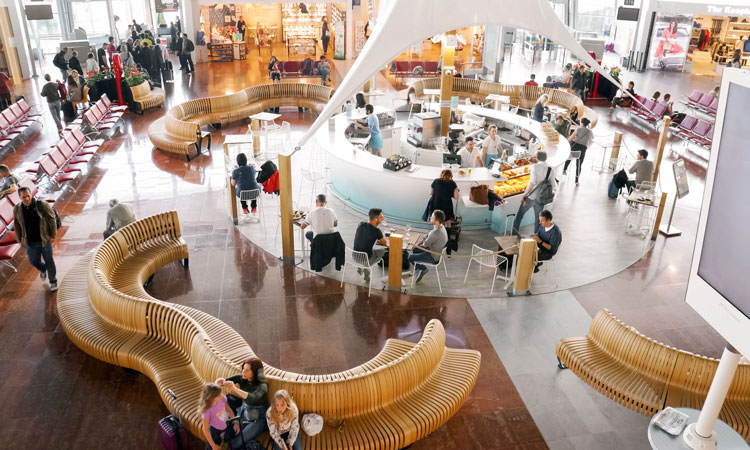The future of airport furniture and how it can help to shape the passenger experience and prevent the spread of COVID-19
- Like
- Digg
- Del
- Tumblr
- VKontakte
- Buffer
- Love This
- Odnoklassniki
- Meneame
- Blogger
- Amazon
- Yahoo Mail
- Gmail
- AOL
- Newsvine
- HackerNews
- Evernote
- MySpace
- Mail.ru
- Viadeo
- Line
- Comments
- Yummly
- SMS
- Viber
- Telegram
- Subscribe
- Skype
- Facebook Messenger
- Kakao
- LiveJournal
- Yammer
- Edgar
- Fintel
- Mix
- Instapaper
- Copy Link
Posted: 25 February 2021 | Adele Kamel, Johan Berhin | No comments yet
Adele Kamel, Head of Global Marketing, and Johan Berhin, Founder, from Green Furniture Concept discuss the future of airport furniture and how it can help to shape the passenger experience and prevent the spread of COVID-19.


Nice Airport. Credit: Green Furniture Concept
What role can airport furniture play in the battle against the spread of COVID-19?
Adele Kamel (AK): Designing a public space requires a lot more than just what meets the eye—layout, material, flow, seating capacity, acoustics and lighting all come into play. Pre-COVID-19, we worked a lot with furniture hygiene and maintenance and passenger hygiene and satisfaction. Our furniture is made of natural wood that contributes to being a natural antiseptic. By using furniture that makes more efficient use of space, seamlessly flowing in and out of every angle of the terminal, you can keep families together, while allowing room for social distancing from the next traveller. COVID-19 will change how the world behaves, but this is not the first or last time that we will see changes in passenger behaviour. Modularity and reconfigurability are essential to keep up with the changes in how waiting areas are used.
Johan Berhin (JB): Furniture formations can be split into smaller units or divided with planters nicely to create sensible social distancing. Good airport design could contribute to guiding and moving the flow of passengers when needed for safety reasons. This leads to increased capacity, for extra queuing with distances when required and more seats when things get back to normal.
How important is furniture in shaping the passenger experience?
JB: Furniture is a natural part of the room and, as such, it can play a much more significant role in the passenger experience than it does at present. Airports are used to looking at furniture as ‘seats’, while spending enormous amounts of money on the airport experience through terminal architecture. Here is a vast opportunity – call it ‘architectural furniture’. We have found ways of making the same kind of massive impression, tailored to the local sense of place, as the most spectacular terminal designs, but with something as flexible and easy to bring in as modular furniture.
AK: The public place is for the public and, therefore, creates a feeling of belonging; ‘your space’ will give confidence and make the passenger choose that place again when travelling next time. Our design is placemaking. “Placemaking is about turning a place from somewhere you can’t wait to go through, to somewhere you never want to leave”.
What furniture trends are you predicting in the aviation sector in the next five years?
JB: We are not just in the aviation industry – we are in the experience industry. This is ‘showbiz’. Travelling is shifting over towards leisure, and the audience is getting dramatically younger and making more short trips. They are looking for an experience, and it should start the minute that they begin their journey.
AK: Every waiting area can be made much more inviting, safe and memorable. Taking it to the point where it could be ‘the place to meet’ as a significant experience and part of your journey. By using biophilic design and greenery, we invite the passengers to sit down, relax, have a coffee or something to eat, before continuing their journey. Seamlessly blow them away and make them want to stay a bit longer and return.




Issue
Related topics
Capacity, COVID-19, Passenger experience and seamless travel, Sustainability


















